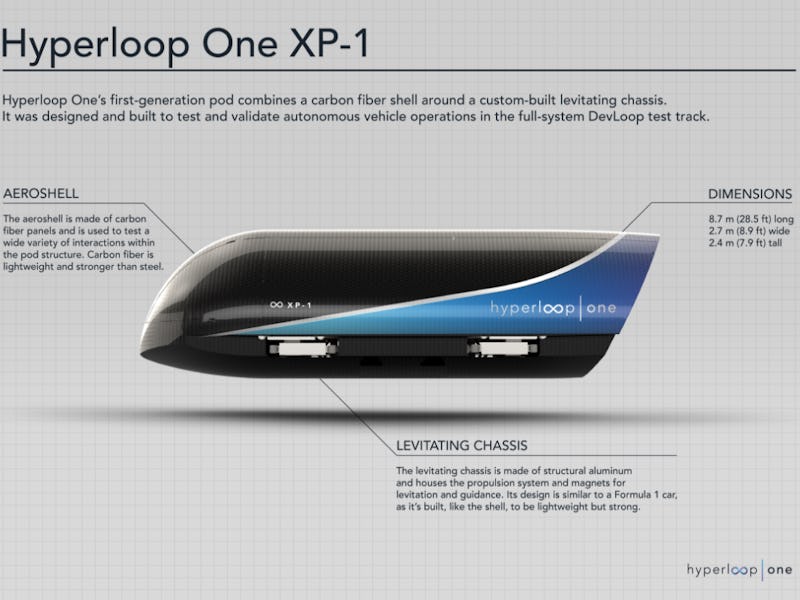In a few short years, the Hyperloop might make nearly supersonic commuter travel as common as a subway swipe, realizing a dream of impossible speed first outlined in a 2013 white paper by Elon Musk. And Hyperloop One, the first company with a functioning prototype, says those speeds are already mathematically possible.
On Wednesday, Hyperloop One announced that it had conducted its second full-scale test of a Hyperloop system, propelling a pod through a vacuum-sealed tube at more than 192 miles per hour. But Rob Lloyd, CEO of Hyperloop One, says that speed wasn’t even pushing the system’s limits — they just ran out of tube to fling it down.
“It’s constrained by the length of the tube,” Lloyd told Inverse on Wednesday. Hyperloop One’s test tube, know as the “DevLoop,” is 500 meters long (its engineers use the metric system — that’s about 1,640 feet). In the DevLoop’s first full-scale test in mid-July, engineers got the pod moving at 69 miles per hour. During the second test, which took place on July 29, the company increased the length of “motor” in the tube (the pushing mechanism that makes the pod go) by a factor of 10 (30 meters to 300 meters) and tripled its horsepower. Lloyd says on a much longer system — a track that measured in miles, not feet — the company could scale their system to hit Elon Musk’s seemingly impossible speed goal.
“We know if we increased the length of motor from 300 meters by another 2,000 meters, we would go 700 miles an hour,” Lloyd says. “Specifically, we know that. It’s mathematically proven. We can put more juice into the system, and we can hit 700 miles an hour. The question is, do we want to do that now?”
Lloyd’s reservations make a lot of sense. It’s hard to get a good sense of how fast 700 miles per hour is. Aside from fighter pilots and astronauts, it’s highly unlikely that any normal human being has traveled at that speed. Modern commercial jet liners pretty much top out in the 600 mph range at cruising altitude, and making anything go at that speed on land is a great way to make a really big explosion or heap of tangled metal.
The pod on tracks before going into the tube.
Hyperloop’s potential rests on two factors: the lack of air resistance and magnetic levitation technology. The pods will travel in a vacuum, meaning that they don’t have to pass through any air or other matter that provides resistance. They will also use magnetic levitation to literally float above the tracks, cutting out any friction from wheels or treads. The world’s fastest train, Japan Railways Maglev, uses the same concept to hit 374 miles per hour, but that’s on an outdoor track with plenty of air and wind resistance, both of which limit its top speech. Japan’s train isn’t commercially viable yet (it’s still being tested), but there’s a similar passenger maglev train in Shanghai that goes 288 mph regularly.
The pod going into the tube.
Hyperloop has the potential to be so fast, in fact, that it almost becomes self-defeating — human physiology just isn’t well-equipped to handle acceleration and deceleration at that level. In other words, people would probably puke a lot. But right now, that’s all still conceptual. Lloyd said that for safety and regulatory reasons (also understandable!), the company isn’t expecting to put a human being in the pod for a couple years at least.
